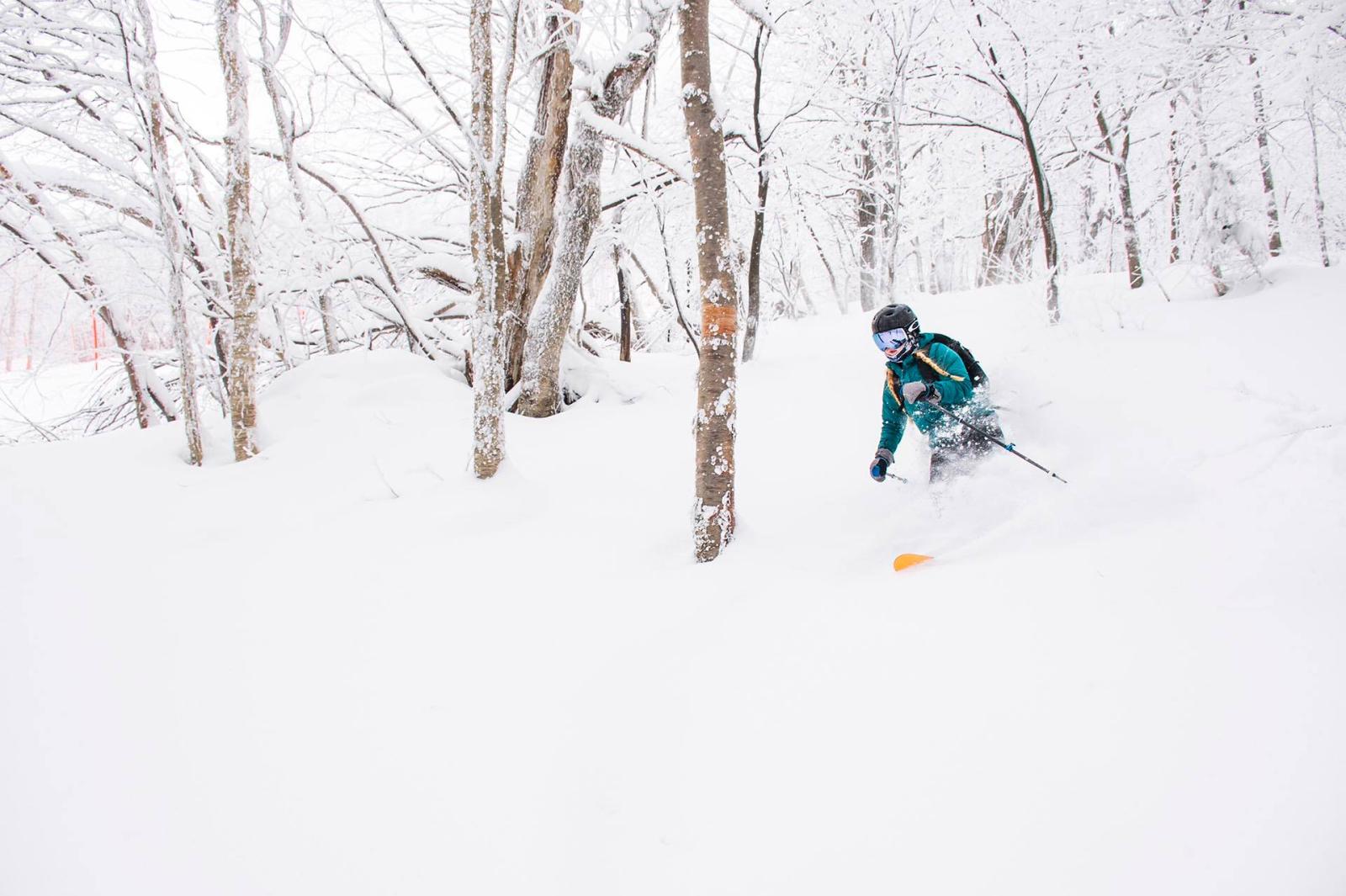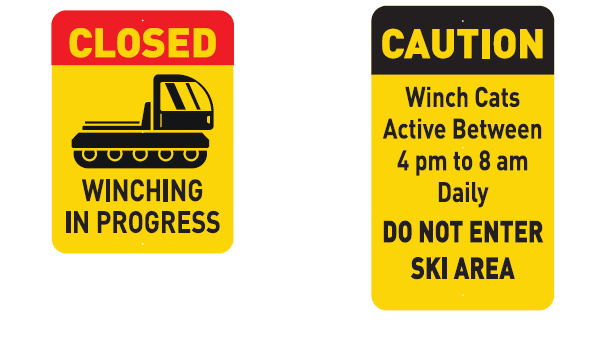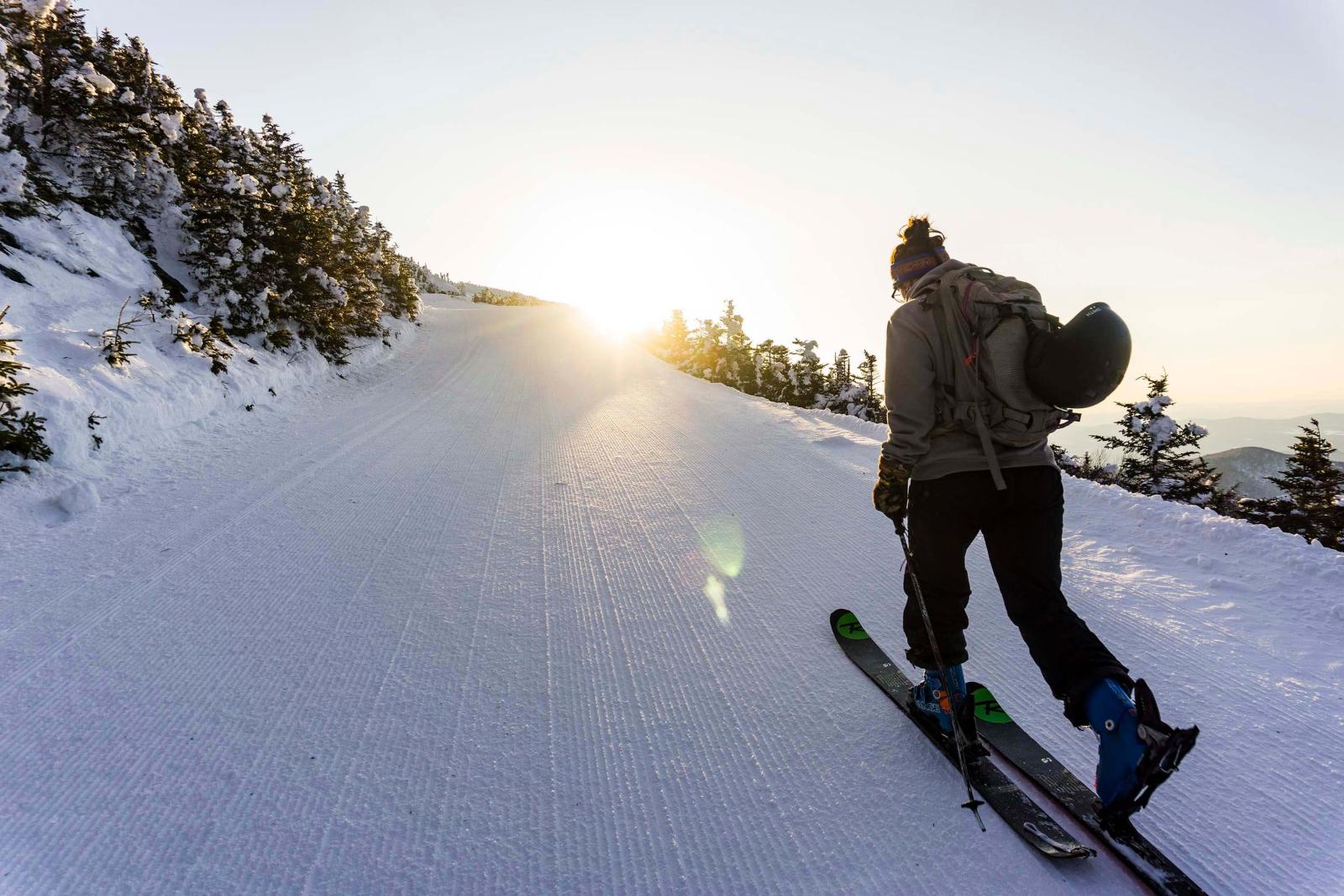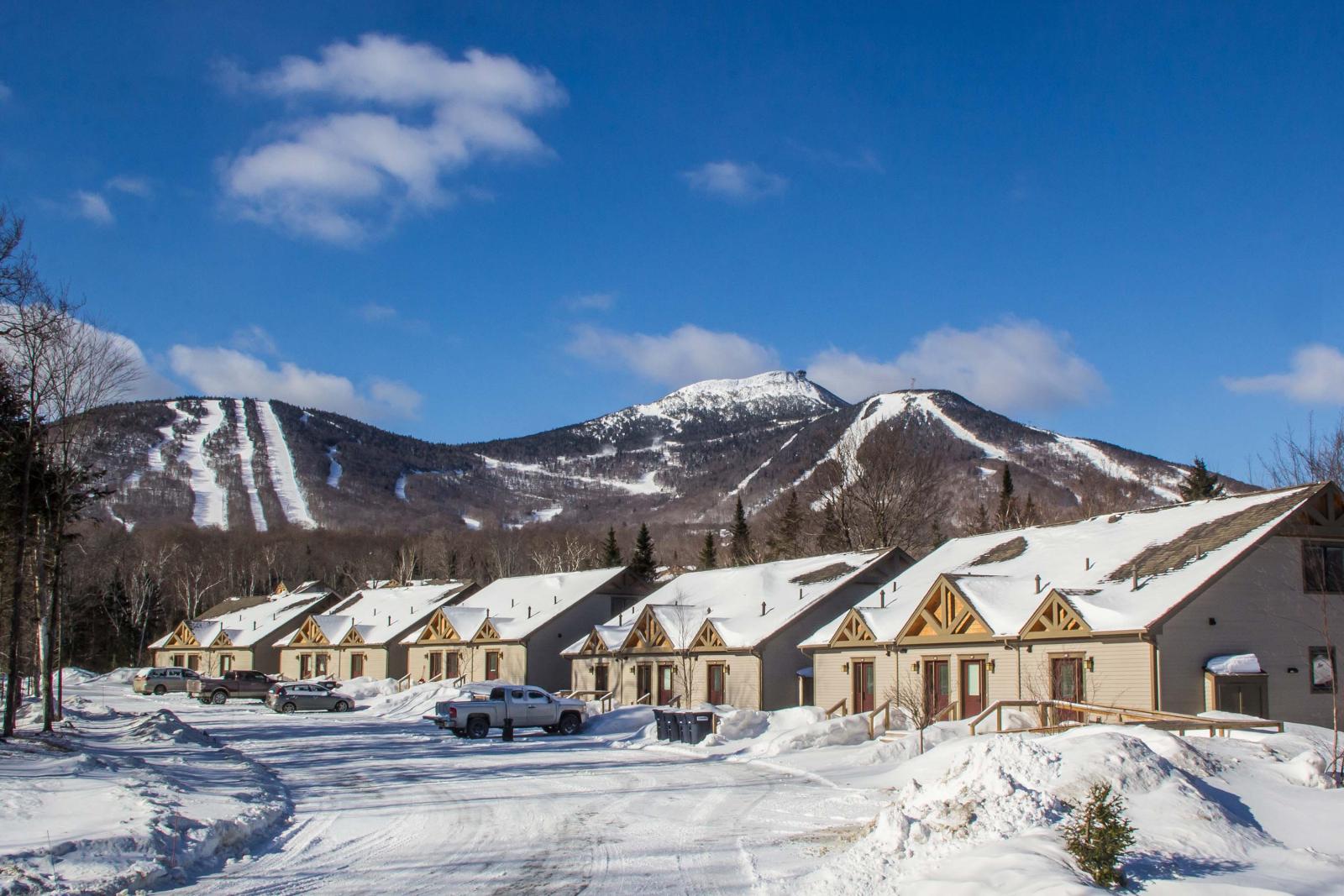Safety
We are in the business of creating experiences, and like nothing better than being out recreating with all of our friends. Fresh air and exercise are essential components to remaining healthy during this time of healing and self-isolation, but we encourage everyone to do so in a conservative manner.
Quick Links
MOUNTAIN RESPONSIBILITY CODE
The National Ski Association Areas created "Your Responsibility Code" as a way to help skiers and riders be aware of the different risks that may happen while on the mountain, which both common sense and personal awareness can help reduce. Below you will see the ten points of Your Responsibility Code.
- Always stay in control. You must be able to stop or avoid people or objects.
- People ahead or downhill of you have the right-of-way. You must avoid them.
- Stop only where you are visible from above and do not restrict traffic.
- Look uphill and avoid others before starting downhill or entering a trail.
- You must prevent runaway equipment.
- Read and obey all signs, warnings, and hazard markings.
- Keep off closed trails and out of closed areas.
- You must know how and be able to load, ride, and unload lifts safely. If you need assistance, ask the lift attendant.
- Do not use lifts or terrain when impaired by alcohol or drugs.
- If you are involved in a collision or incident, share your contact information with each other and a ski area employee.
Your Responsibility Code Video
KNOW THE CODE: IT'S YOUR RESPONSIBILITY.
UPHILL TRAVEL POLICY
Please see all details on our Uphill Travel Policy HERE
TRAIL RATING SYSTEM
WHAT THEY MEAN
- Green Circle: Easier
- Blue Square: More Difficult
- Black Diamond: Most Difficult
LIFT SAFETY
It's your responsibility to know how to use and ride the lift safely.
GET ON
- As a chair passes you at the "Wait Here" sign, move ahead quickly to the "Load Here" sign and line up evenly. When the next chair comes behind you, sit on the seat, and slide back as far as you can - to keep from falling off the chair.
SIT BACK, SIT STILL, HOLD ON
- Sit way back to keep from falling from the chair and enjoy the ride to the top. No horsing around, it's dangerous when you are riding up in the air.
AT THE TOP, PLAN AHEAD TO UNLOAD
- At the "Unload Here" sign it is time to get off. Stand up, and ski down the ramp. Watch for others ahead and ski around them. Move out of the way quickly, so others can unload too.
HELPFUL REMINDERS
- Need assistance? Ask the lift attendant for help. The smallest kids should load closest to the attendant.
- Remove & carry packs. Do not use phones, music, or games while loading or unloading.
- It is OK to miss a chair and wait for the next one.
- When loading, watch for the approaching chair and then sit to the back once seated.
- Drop something? Let it fall. Any item dropped can be picked up later.
- Absolutely NO horseplay on the lifts.
To learn more about lift and mountain safety, click here
GLADES, TREE SKIING AND BACKCOUNTRY
JAY'S GLADES
Glades are named on the map and are opened and closed by Ski Patrol.
Explore all of the glades within the Jay Peak boundary but make sure you have:
- The required advanced skills.
- Ski in groups of 3.
- Common sense.
- Do not enter glades/woods after 3:00 PM. Glades are not routinely swept by Ski Patrol.
JAY'S WOODS
Woods are in-bound sections of forest that are not named on the map and are not opened or closed by Ski Patrol.
OUT OF BOUNDS
Andre’s Paradise and Beaver Pond Glades hold some of our favorite tree skiing and snowboarding on the hill. However, most people who cross the boundary line of these glades get lost.
There is a double ridge line at the boundary line. Most think they are on their way back to the resort, but in fact, are venturing further and further away into gully-filled flats (Black Falls) that will involve hours of strenuous hiking and traversing. If you don’t know where you’re going, you will put your life, your friends’ lives, and your rescuers' lives at risk. Trust us; this is not as much fun as staying in-bounds within Andre’s Paradise.
However, in the case of emergency – if you are lost or injured – Ski Patrol will rescue you.
BACKCOUNTRY
Many people equate Jay Peak with tremendous backcountry, and they are right; the backcountry that surrounds the ski area is some of the best you will find. It is also potentially dangerous. Know before you go. Be smart. Note: when we talk backcountry, we mean off-property/outside the skiing and riding boundary. We usually refer to the in-bounds forests as glades or woods.
|
|
|
|
|
|
|
|
Be Prepared
For backcountry wilderness travel, to possibly get lost, wait for a rescue, and maybe even spend a night in the woods. At a minimum, carry (and know how to use):
- Headlamp
- Map, GPS, and Compass
- Skins/touring skis or split board and/or snowshoes
- Phone and/or radio
- Food and water, enough to spend the night
- Extra batteries, keep them warm
- Extra layers
Tell someone where you intend to go and when you intend to return. It’s not a good idea to venture into unfamiliar terrain. Go with a guide or someone who knows the area well. And, always ski with at least two competent partners.
Know the Risk
We may not have a high risk of avalanches, but Jay Peak is home to some of the coldest, windiest, and most severe weather in the country. Even a minor injury in the backcountry can quickly turn fatal, as prolonged exposure to the elements can cause hypothermia, dehydration, and in the worst case, death.
How much does a rescue cost?
The cost of a backcountry rescue is calculated based on the number of rescuers, fuel, supplies, and transportation costs, multiplied by the number of hours the rescue takes. The minimum price tag is much more than a season’s pass (often upwards of $1000 for a short, 4-hour rescue).
TERRAIN PARK SAFETY
Jay Peak Parks adheres to the guidance, logos, and signage developed through the Park Smart Freestyle Safety Program. All of Jay Peak Parks and Safety Signage are designated by an orange color.
Jay Peak Terrain Parks may contain jumps, hits, ramps, banks, fun boxes, jibs, rails, quarter pipes, and other constructed or natural terrain features.
While you're in the parks you may see our Park Crew doing a mid-day rake run to freshen up the take-offs and landings of some features. If you see a member of Park Crew raking at a feature, please know the feature is CLOSED until they have finished raking and signified that it is clear to drop.
PRIOR to using Freestyle Terrain, you are responsible for familiarizing yourself with Freestyle Terrain and obeying all instructions, warnings, and signs.
Park Smart is all about safety - having the knowledge and the plan to enjoy freestyle terrain. The five points of Park Smart include:
Start Small | Work your way up. Build your Skills.
If you are just getting into the park for the first time, or the first time that day, start with the smaller stuff and work your way up. If you aren’t sure about how to use a feature, build your skills first.
Freestyle Terrain comes in different shapes and sizes, so starting out, look for small progression parks and features and then work your way up to medium or large parks and features.
Make a Plan | Every Feature. Every Time.
Every time you ski or ride on freestyle terrain, have a plan for each feature you are going to use. Remember, your speed, approach, and take-off will directly affect your maneuver and landing.
When first inspecting the jumps consider the following elements of each jump and remember ATML:
A The approach zone is for setting your speed and stance.
T The take-off zone is for making moves that start your trick.
M The maneuver zone is for controlling your style.
L The landing zone is for getting straight and riding away clean.
Always Look | Before you drop.
Before getting into freestyle terrain observe, all signage and warnings. Use your first run as a warm-up and familiarize yourself with the park layout and features. Remember that features change constantly due to weather, usage, and time of day, so it is important to continue to inspect features throughout the day.
Respect | The features and other users.
Always have respect for terrain park features, as well as other skiers/riders. Only one person on a feature at a time – wait your turn and call your drop-in. Always clear the landing area quickly.
Also, respect all signs –stay off closed features. Respect is important both in-park, as well as the rest of the mountain, so be smart when you are heading down the slopes or over to the lift.
Take it Easy | Know your limits. Land on your feet.
Ride within your ability and consider taking a lesson if you want to build your knowledge, skills, and bag of tricks. Stay in control both on the ground and in the air – know your limits.
Remember you can control how big or small you take a feature by varying your speed and take off.
Inverted aerials increase the chance of serious injury and are not recommended.
ANIMALS ON LIFTS
Pursuant to the Americans with Disability Act (ADA), it is the resort policy that service animals (which is defined under the ADA as dogs) are not permitted on chairlifts at the resort during the ski season, based on the legitimate safety requirements determined by the Resort regarding the safety of other guests and employees, as well as for the safety of the service animal itself. For the same reasons, the Resort does not allow service animals to accompany guests skiing or snowboarding on mountain trails and ski runs, and all skiing and snowboarding terrain at the resort. This policy of restricting service animals on both chairlifts and accompanying guests while using the Resort skiing terrain also applies equally to all other animals, including pets and emotional support animals.
At all times, the service animal must be under the control of its handler. The service animal shall have a harness, leash or other tether, unless either the handler is unable because of a disability to use a harness, leash or other tether, or the use of a harness, leash or other tether would interfere with the service animal’s safe, effective performance of work or tasks, in which case the service animal must be otherwise under the handler’s control (e.g., voice control, signals or other effective means).
Authorized personnel will request the service animal be removed from the premises if: (1) The animal is out of control and the animal’s handler does not take immediate effective action to control it; or (2) The animal is not housebroken. If the service animal is removed, the Resort will make all reasonable efforts to give the individual with a disability the opportunity to participate in the services or activities without having the service animal on the premises.
LIMITED EXCEPTION
Service animals are permitted on the Jay Peak Tram when it is open to the public, and guests with service animals who access the mountain via the Jay Peak Tram will download back to the Jay Peak base area via the Jay Peak Tram as well. If a guest with a service animal seeks to visit an area of the mountain for a special event that is not accessible via the Tram, or the Tram is not in operation to the public, Jay Peak will consider alternative transport to the venue on the mountain through an on-mountain vehicle (snowmobile, OHV, truck or other vehicle), if Jay Peak determines that it is reasonable to do so, depending on the mountain location, weather conditions and other variables. Given the unique winter environmental conditions, extreme terrain and weather conditions, Jay Peak recommends that guests provide as much advance notice as possible when seeking unique accessibility to a location or venue on the mountain that may not be accessible via the Jay Peak Tram.
AirFlare Search Technology
If you find yourself in need of help, you can be invisible to a Ski Patrol Team just a few feet off a run. AirFlare transforms your mobile phone into a rescue beacon detectable up to a 1/2 mile away.
ABOUT AIRFLARE
Introducing AirFlare, the app that transforms your mobile phone into a rescue beacon. AirFlare transforms your mobile phone into a wilderness rescue beacon that provides search teams with multiple ways to find you on or off the grid. AirFlare adds no weight or bulk to your pack, works with limited or no cellular service, extends off-grid battery life to a week or longer, and requires no user action to be searchable. By leveraging the cell phone already in your pocket, AirFlare is a low-cost, easy to use, and a tool you don't need to remember to pack. AirFlare search technology never blinks, sees through trees and over rugged terrain - helping search teams find you quickly and reliably. AirFlare also provides a number of self-help features. For example, the ability to determine the exact location of a friend or family member with a push of a single button.
AIRFLARE AT JAY PEAK
Jay Peak Ski Patrol has adopted AirFlare Search Technology as part of their ongoing effort to promote mountain safety and awareness.
Download App for iOS CLICK HERE
Download App for Android CLICK HERE
Be advised that all fencing, pads, poles, signage, and other marking devices are in place to inform you and indicate a potential obstacle of hazard. THESE MARKERS WILL NOT PROTECT YOU FROM INJURY. It is your responsibility to stay away from marked objects and areas.





